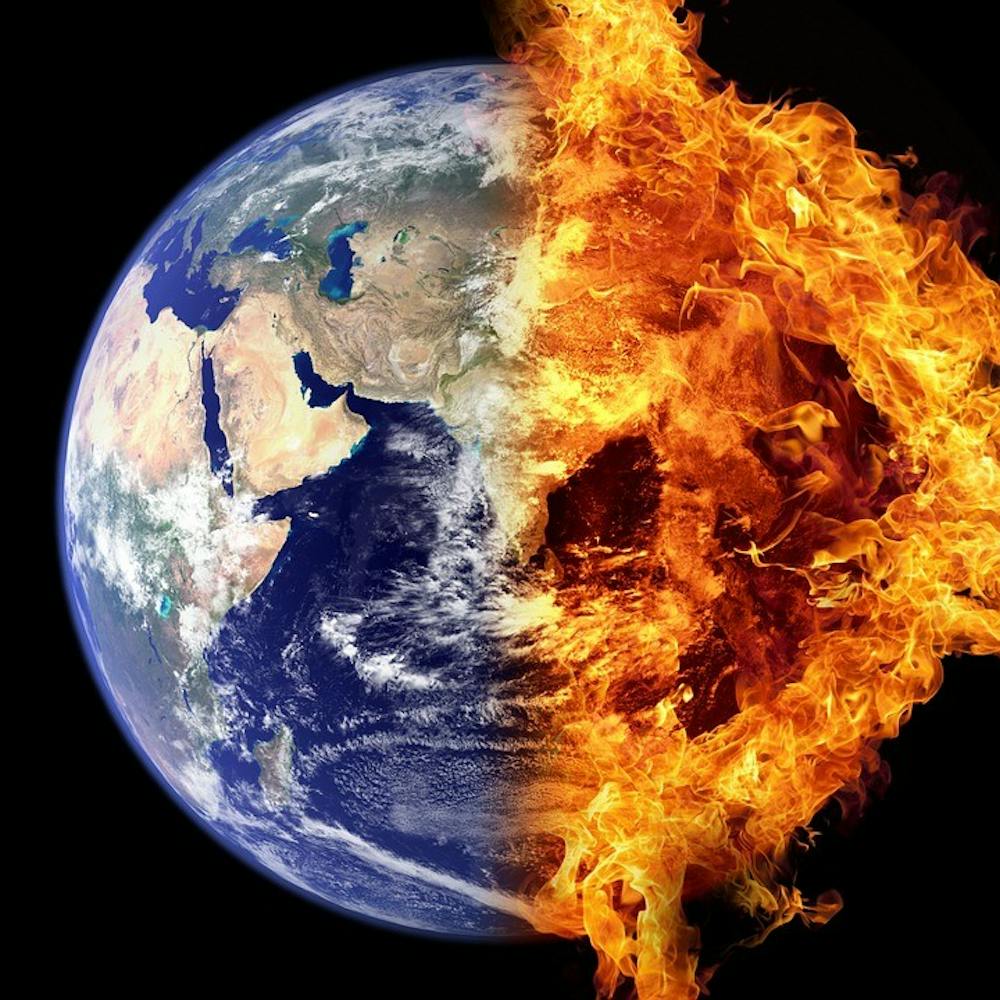2016 was the warmest year on record, breaking the record previously held by 2015, according to the National Oceanic and Atmospheric Administration.
With the current trend in increasing temperatures, students are grabbing their frisbees and hammocks and heading outside. However, some can’t enjoy the weather without first worrying about climate change.
Petra Zimmermann, an associate professor of geography, warned to not jump to conclusions because of sudden warm weather, and to remember that climate and weather are not the same.
“Whether this is a sign of global warming, we would have to look at the changes over time,” Zimmermann said. “If we see this regularly, then we could think about possibly attributing this to climate change and global warming. I’m not saying it’s not, but we have to look at all of the data.”
Leo Sonnefeld, a junior accounting major, feels like the current weather is bittersweet.
“It’s nice, but at the same time it shouldn’t be this warm right now and it is kind of scary but it feels good out. I’m not really complaining that much,” Sonnefeld said. “It’s just kind of weird when like, a week ago, it was like 30 degrees and now it’s like 60.”
2016 was the warmest year on record, breaking the record previously held by 2015, according to the National Oceanic and Atmospheric Administration.
Zimmermann attributes the the current warm temperatures to meteorology. A ridge of high pressure over the eastern part of the country leads to higher temperatures, whereas a trough in the West contributes to colder temperatures because it acts as a funnel to channel Canadian air down to the lower 48.
“The fact that it’s very warm right now is not necessarily an indication of global warming. It may be, but that has to be examined within the context of the entire temperature record,” Zimmermann said.
Although this year’s unusually warm winter may not be a direct result of climate change, the environment may be negatively impacted this spring and summer.
“On the quad near the administration building, the crocuses and flowers are starting to come up, and I’m seeing evidence of trees starting to leaf out,” Zimmermann said. “As pleasant as it is, this is really not good. We should have some cold temperatures.”
Kamal Islam, a professor of wildlife biology, said the sudden change in temperature can cause migratory birds such as American robins, red-winged blackbirds and Eastern meadowlarks to return to Muncie. If the weather should change back to its normal winter pattern, the survival of these migratory birds could be negatively impacted.
“When the birds come here it’s usually because of abundant food source,” Islam said. “If you have warming, insects and caterpillars that come out early, might mature early, which means they wouldn’t have nutrients they need to raise their families.”
It the birds can’t find the food source they need here, they are likely to migrate someone else, which could affect our ecosystem, Islam said.
For now, though, students are content with enjoying the warm weather while it lasts.
Clare Collins, a junior communications studies major, feels that the weather is perfect but doubts that the current status of climate change is far from it.
“I think it’s a really good in between of it being really hot and cold. It’s kind of perfect out. I like how it’s a little overcast,” Collins said. “I’m definitely passionate about the environment, so if it’s going to be warm here for us but it’s also going to be warm somewhere where the ice is melting then maybe it shouldn’t feel like that.”





